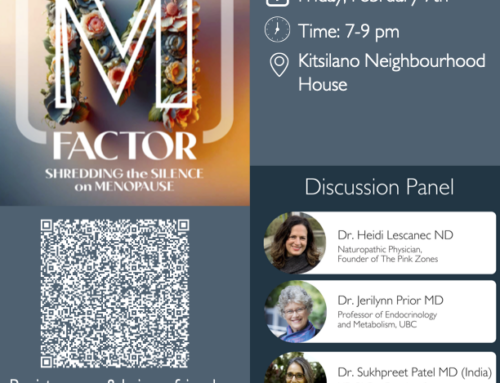Mindful eating: a how-to guide to feeding ourselves well

How you eat is as important as what you eat.
Feeding yourself well is actually pretty darn easy and will help you to enjoy your food more! Ever stop to wonder what happens in your body when you have a sit-down meal as opposed to dining while multi-tasking or eating on-the-run to soccer practice?
Physical effects of eating mindfully:
Taking the time to dine resets the nervous system to “Rest and Digest” mode. In physiological terms, the Parasympathetic nervous system governs digestion and only operates in relaxation mode, as opposed to the “Fight or Flight” stress mode of the Sympathetic nervous system. This allows your body to properly assimilate and absorb your meal. Many of us, children included, are in productive fight or flight mode much of the day at school or work and that stress switch remains in the on position when we eat on-the-run or while multi-tasking, leading to a slew of digestive issues.
Mental & emotional benefits of eating family meals together:
Bookending the day by meeting around a table as a family is conducive to cultivating a healthy family connection. Having the chance to talk about what lies ahead and meeting again at the end of a full day to catch up and re-group is grounding, relaxing and critical for kids social development as well as their confidence. Studies show that children who regularly eat at the table with family have increased self-esteem.
Overall effects of taking your time to eat:
Taking the time to eat mindfully will not only allow you to truly refuel, but you’ll actually feel better! So many digestive disturbances (gas, bloating, heartburn, indigestion, constipation) and assimilation issues (low iron, food sensitivities) are exacerbated when we eat on-the-go. When our “Rest and Digest” mode is off, our bodies don’t effectively make the digestive juices required to break down the foods we consume. If you don’t give your body the chance to make the digestive enzymes to metabolize your food, you won’t get the benefit of any of the healthy food choices you’re trying to implement! The efforts of buying well and taking the time to prepare healthful meals are simply wasted if we don’t digest our food properly.
Five Simple Steps to Mindful Eating:
- Get out of stress mode.
- Pause, do not dive in!
- Take a moment to look at and smell your food.
- When you take a bite, really chew it.
- Do not drink water at your meal.
Get out of stress mode.
This means no more multi-tasking in front of the computer, making to-do lists or even perusing health-blogs while eating! Clear the clutter around your eating area; you do not want to be surrounded by work or digital distractions.
If you are solo, make it sacred. This is a great time to put a pause on being a productive member of society or functioning in “distracted” mode. Eat in space that is peaceful, nice music, a sweet view, some outdoor air or a good book are conducive companions if you are eating on your own.
If you are in partnership or the family-way, having proper sit-down meals at home is modern day miracle for many. Treat it so! Gathering around the table to share a meal with your loved-ones should be the only focus; no TV, no smartphones. Peaceful music that you all enjoy can certainly add to the experience, however. If your little ones are not used to the family table, accept that changing routine will take some time and effort, but that good manners and a peaceful mealtime are well worth it in the long run.
Pause, do not dive in!
Before your first bite, take a moment to feel your breath, like you would in a yoga class. Do some deep belly breathing, start in through your nose, and out through your nose, five times deeply. This re-wires your nervous system. When in stress mode, we take many rapid and shallow breaths to get more oxygen to our lungs to run from a life-threatening situation. Slow, deep breathing lets your body know that it is not in stress mode. As if putting down a book, gently put aside all thoughts that don’t relate to the aromatic bowl or colourful plate in front of you. Enjoying this food is your primary occupation; the other tasks on your to-do lists are secondary and will be better addressed once you are well fueled and re-energized.
Take a moment to look at and smell your food.
The physical senses, olfactory and visual, give your body the cue to re-orient, and get those digestive juices secreted. The sight and smell of food generates the release of salivary amylase. This is when (if you are so inclined) you may say a prayer of gratitude and thanks to the creator/spirit/powers-that-be that brought you the bounty before you, to the farmers who grew the food, or, as a dedication to the person who created the meal. If you made the meal, thank yourself for taking the time or, if it was a partner, parent, or someone who loves you that packed you a lunch or cooked you a dinner thank your lucky stars!
When you take a bite, really chew it.
How much should you chew in order to fully masticate that mouthful? Sometimes numbers are assigned to this task, like chewing 20 times before you swallow. You can use a number if you find it helpful but the point is really just that inhaling your food is really counter-productive!
When you actually chew your food, you start to secrete salivary amylase (which breaks down starches) and lingual lipase (which breaks down fats) in your mouth. The brain then sends a message to the parietal cells in the stomach to release HCL (hydrochloric acid) which starts to break food down into smaller particles so that other digestive enzymes (ie. lactase to digest lactose from dairy, lipase to digest fats, and amylase to digest starches, etc.) will have a chance to go to work.
Do not drink water at your meal.
Contrary to many ill-advised diet gurus recommendations to fill up on water (or other beverages) at meal time, drowning your stomach in the water that should be re-hydrating you through the day goes against your body’s physiology! Too much fluid dilutes your hydrochloric acid; a necessary initial trigger for setting off the messages that must go down the line to the gallbladder and pancreas to let them know they need to start helping with digestion. If we interfere with our HCL, particularly by washing it away in cold water, the body completely misses the critical signal to start secreting those necessary digestive enzymes (fat-dissolving, starch bond breaking) and bile from the gallbladder.
But what if you’re thirsty? Well, you can have a little bit of water to cleanse your palate, but don’t mix up rehydrating with eating; you should do these separately. Carry a stainless steel water bottle with you and rehydrate throughout the day – but avoid it when you are in “rest and digest” mode, and your digestion will thank you!
Eating mindfully means aligning your body and mind to deliberately and consciously slow down and spend time in “Rest and Digest” mode.
You’ll allow yourself time to appreciate the taste of your meal, feel healthier and will be much less likely to overeat. It goes without saying that this is a very beneficial habit to provide for your children, too. By helping our minds to help our bodies, we can truly feed ourselves well.
















